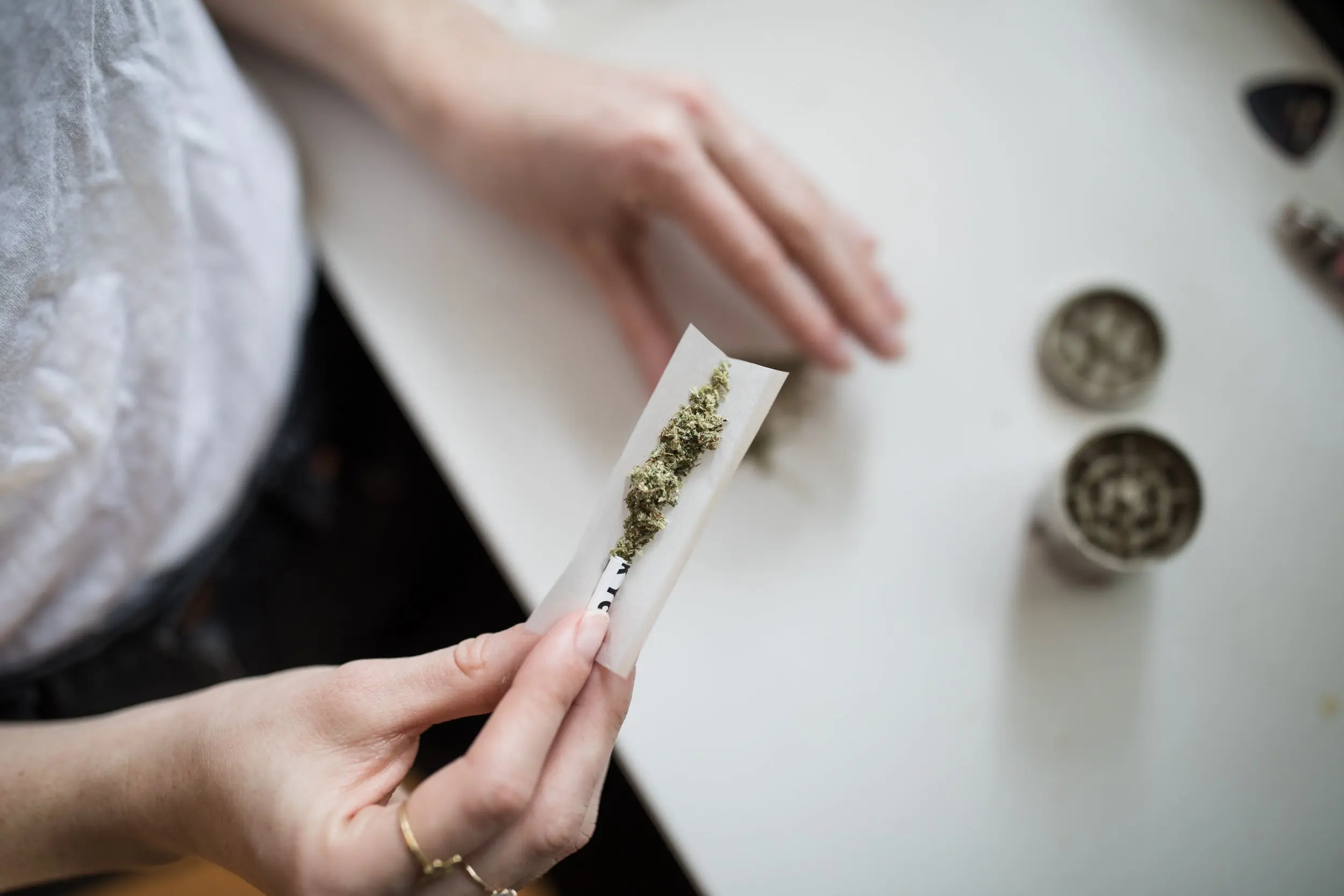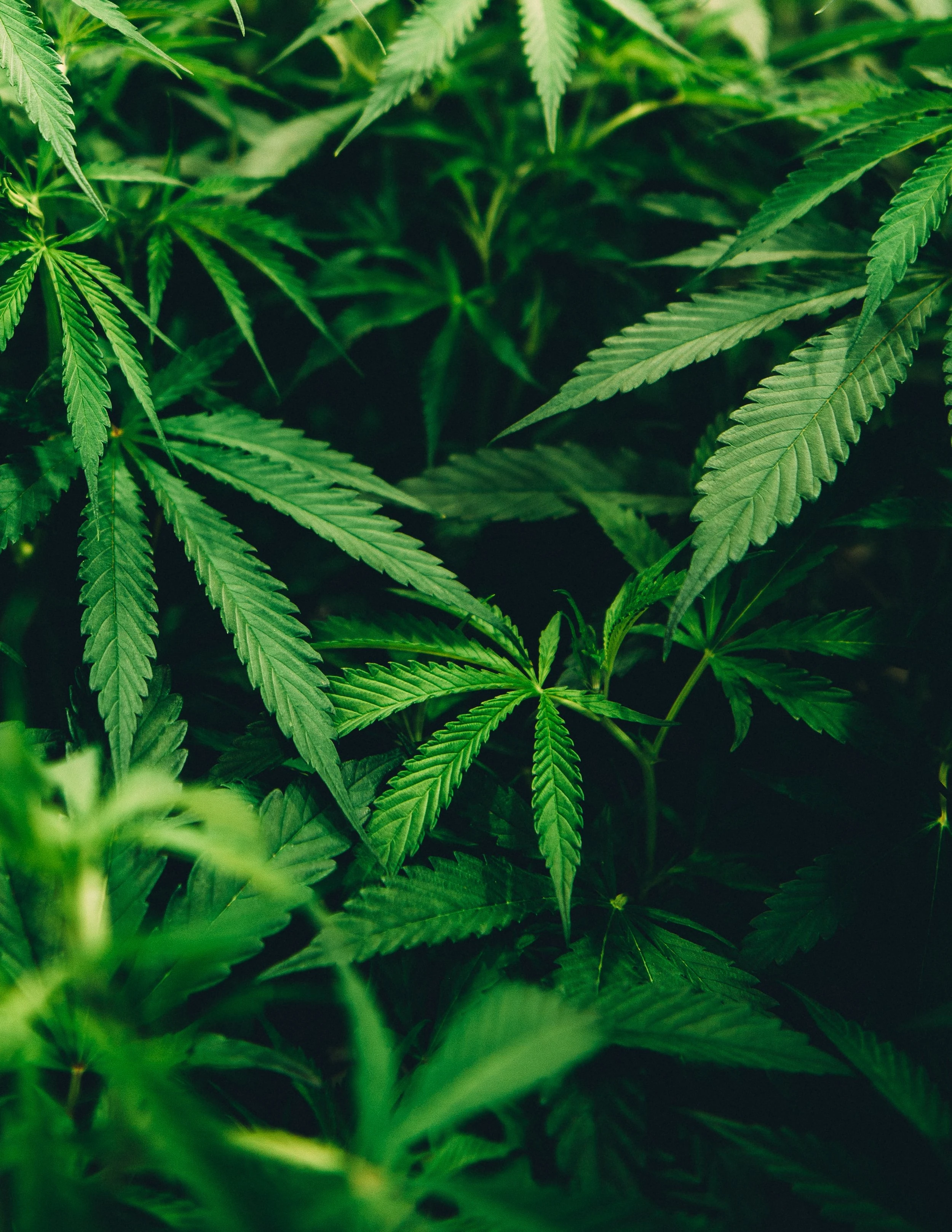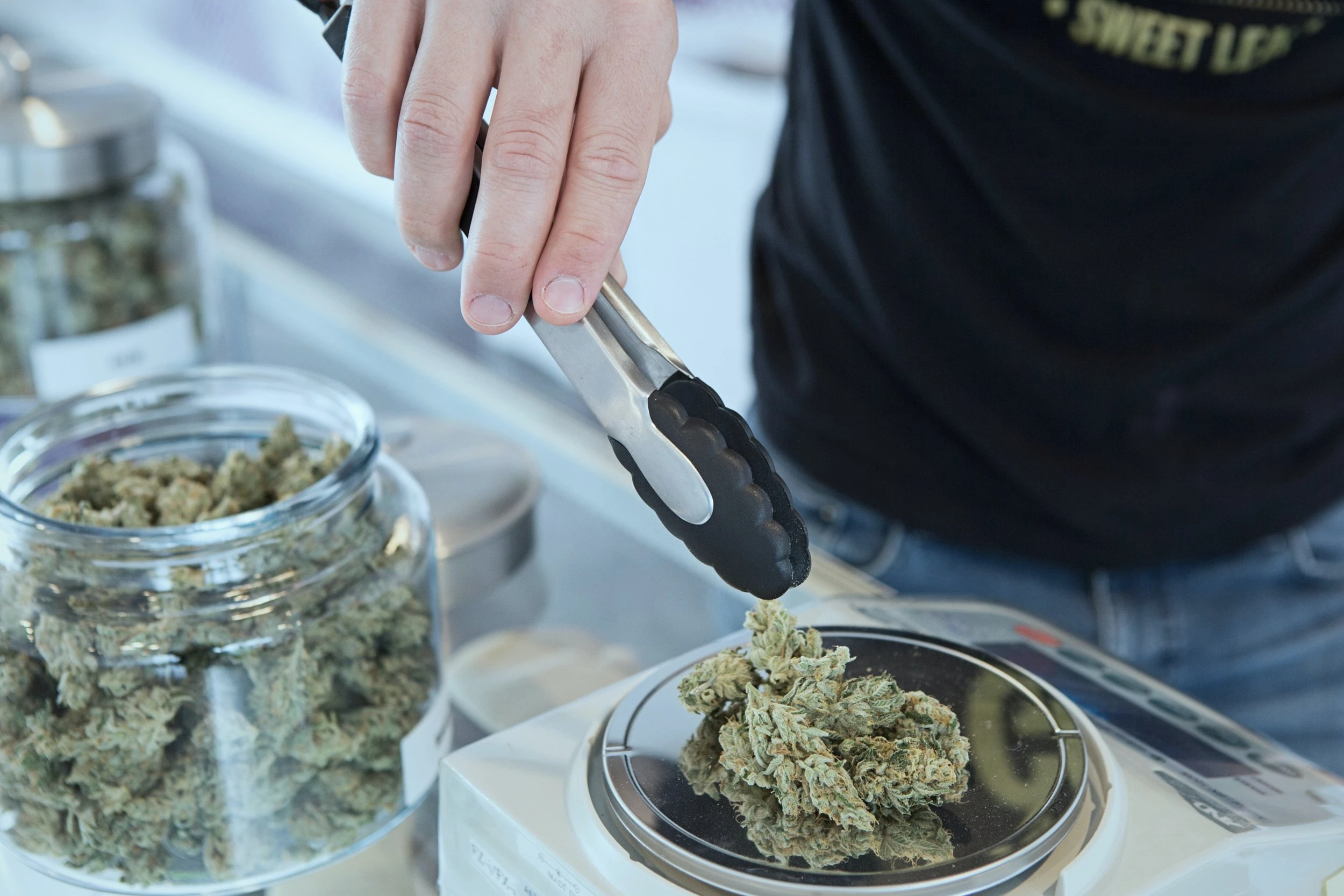
This blog post may contain affiliate links where I may earn commission from qualifying purchases. This blog post is not intended to promote cannabis use and is not medical, health or professional advice. All opinions expressed in this blog post are my personal views and are intended for educational and entertainment purposes only. Information provided in this blog posts including without limitation information regarding product attributes is provided as general information.
More and more people are choosing raw cannabis over decarboxylated products as they believe that it offers some potential health benefits. But whether it’s really a smarter choice remains a question even in the scientific community.
Current studies on the subject claim that even without converting THCA and CBDA into THC and CBD, these natural compounds could still produce therapeutic effects. Their psychoactive properties, however, are not activated in their original forms. Since you’re likely to encounter these options in the weed market, it’s important that you’re able to decide on the best cannabis products for you.
If you’re also tempted to go for raw cannabis - well, why not? Just make sure that you know all the essential facts beforehand. There are sources claiming that decarboxylated marijuana offers highly potent effects, and is also much safer since harmful pathogens are removed in the process.
It’s true, but assuming that the Tetrahyrdocannabinolic Acid (THCA) and Cannabidiolic Acid (CBDA) in themselves are not effective has no valid grounds. Anecdotal evidence and surveys say otherwise. You might become the next person who will share your own story of how raw cannabis has benefited your health and lifestyle in several ways. So, read on and discover the perks of THCA and CBDA.

Photo by Matthew Brodeur on Unsplash
Overview of Raw Cannabis
There are many commercial marijuana products sold in the market nowadays - CBD oil, edibles, tinctures, topicals, flowers, and all. But none of these items truly define raw cannabis unless the original form of the pot is retained. What does that mean? It’s pretty obvious that raw cannabis refers to authentic plant material that hasn’t been processed. This variety is usually compared with decarboxylated products or those that have been heated at a certain temperature to convert THCA and CBDA into THC and CBD. This chemical conversion is needed to activate the psychoactive properties of those compounds.
Researchers have isolated over 100 cannabinoids, so far. THC, CBD, and CBG are the three major compounds that have shown potential therapeutic effects. But since they don’t occur naturally in high concentrations in raw marijuana, the original compounds are being converted to produce larger amounts. Experts call these compounds tetrahydrocannabinol acid (THCA-A), cannabidiolic acid (CBDA), and cannabigerolic acid (CBGA). By exposing these plant biochemicals to light or heat, the carboxylic acid group detaches, leaving behind the activated psychoactive properties. This process is called decarboxylation, which may be done in several methods. It enables the byproducts like CBD oil to produce euphoric highs and some therapeutic benefits.
Essentially, raw cannabis pertains to the plant material that is mature and ready for harvest. It’s not yet dried, cured, or heated for consumption. This product is usually eaten by consumers because it contains cannabinoids in their acid forms, such as CBDA and THCA, before decarboxylation. These natural compounds can provide several health benefits, in addition to vitamins, minerals, and fatty acids, which are different from marijuana which is decarboxylated.
Biochemical Properties of Raw Cannabis
Raw cannabis is best characterized by its original form - not heated, dried, or cured in any way. This product retains its biochemical properties, including proteins, minerals such as iron and calcium, fatty acids, and vitamins like vitamins A, E, C, B1, and B2, in addition to other compounds. People who prefer to consume raw marijuana enjoy different health benefits produced by THCA and CBDA. While there are also others who opt for decarboxylated weed like CBD oil to experience the effects of THC and CBD.
Although decarboxylation, infusion, and extractions can preserve cannabinoids and terpenes in marijuana, there are nutritional values that end up wasted when the cannabis is heated or turned into an extract. This is usually done through smoking or heating cannabis in order to activate the two major compounds, tetrahydrocannabinol (THC) and cannabidiol (CBD). It’s discretionary on the part of the consumers whether or not to decarboxylate cannabis or stay with the raw material.
Interesting Fact about Raw Cannabis
So, how does it feel to consume raw cannabis? Ever wondered about that? Well, since raw cannabis might be too wet to smoke, the moisture would likely make the material taste vegetal and turn the smoke into something harsh. In practice, plants are usually frozen right after the harvest so that the trichomes could be preserved, and also their nutritional value. These raw cannabis buds and leaves can be juiced and then mixed with certain recipes, such as smoothies and salads for maximum absorption of nutrients. If a particular cannabis strain contains THC, ingesting the substance in raw form can still potentially produce psychoactive highs although it’s not decarboxylated.
What is THCA?
Tetrahydrocannabinolic acid (THCA) is the acidic form of THC that’s present in raw cannabis. It’s also a byproduct of the first cannabinoid to develop as the marijuana plant matures, called CBGA or known as the mother of all cannabinoids. Once this substance breaks down, it produces THCA and CBDA. The former cannabinoid is not intoxicating if ingested due to the additional molecular carboxyl ring that prevents it from binding to brain receptors that cause feelings of high. THCA can be converted to THC to activate its psychoactive properties.
Potential Health Benefits of THCA

When you consume raw cannabis, you’ll likely have a dose of THCA in certain amounts. This is the most abundant cannabinoid acid, according to experts. Although it doesn’t produce psychoactive effects, there’s research supporting the potential analgesic, anti-inflammatory, and antiemetic properties of this medical marijuana.
- Analgesic
THCA has been studied for its analgesic properties. It was shown in a mouse experiment that the cannabinoid produced an effect twice as potent as THC. Both compounds were administered orally to the subjects at a 20mg/kg dose. However, further studies are needed to substantiate the available evidence.
- Anti-Inflammatory
In another mouse study, THCA has been found to have anti-inflammatory properties. The cannabinoid also has the ability to act as an antipyretic, bronchodilator, and antirheumatic agent. There are previous reports claiming that THC and CBD can trigger the production of pro-inflammatory eicosanoids, but eventually, it was found that metabolites like THCA could inhibit the process. That simply means that the acid is a potent anti-inflammatory agent.
- Antiemetic
Some researchers believed that THCA is a more potent alternative to THC in treating nausea and vomiting, hence a study has been conducted. In rat subjects, the results suggested that the theory has some merits. This finding supports the claim that THCA is not intoxicating and does not induce hypothermia or reduce locomotion.
What is CBDA?

Cannabidiolic acid (CBDA) is the acidic form of cannabidiol (CBD). It’s one of many compounds produced by the cannabis plant which can eventually convert into CBD when exposed to heat. When consumed, this cannabinoid interacts with the endocannabinoid system to produce therapeutic effects that can relieve stress, anxiety, and depression among others. Like THCA, this raw substance is also non-intoxicating and may be processed to create CBD which is an activated form that produces different effects.
Potential Health Benefits of CBDA
Another natural compound that you’ll consume when you eat raw cannabis is CBDA. This cannabinoid acid in medical marijuana has been found to have potential therapeutic applications, without any intoxicating effects. It can act as an antitumor, anti-inflammatory, and antiemetic agent, as briefly discussed below.
- Antitumor
CBDA has been studied for its potential to combat the mutation of tumoral cells in breast cancer patients. It was found that the cannabinoid has a therapeutic modality in the abrogation of cancer cell migration. Although more research is needed, the initial findings on this medical marijuana substance are a promising starting point to consider CBDA as a therapeutic option for many people who are struggling with cancers or even multiple sclerosis.
- Anti-Inflammatory
As research found, CBDA and THCA share similar properties that inhibit inflammation. This substance is considered a selective inhibitor for COX-2 that works similarly to nonsteroidal anti-inflammatory drugs. Hence, when consumed, it can help in the treatment of acute and chronic pain and inflammation.
- Antiemetic
In another study on rat subjects, it was discovered that CBDA offers a potential treatment for nausea and vomiting. The cannabinoid may even relieve anticipatory nausea that has no current treatment due to its greater potency at inhibiting vomiting, compared with cannabidiol (CBD). This finding serves as a signal for further research into the substance and the possible role it can play in managing certain symptoms of cancer, especially nausea during chemo treatment.
How to Consume Raw Cannabis
You can consume raw cannabis in a delightful way. There are many practical consumption methods that you can try if you’re seeking a pleasant experience with weed. For example, you can incorporate cannabis into your daily diet by consuming the material in its whole form. Sure, you can also enjoy fresh cannabis on its own. The following are two of the most popular varieties if you’re consuming raw marijuana:
- Juice Preparation - If you’re looking for a delicious cannabis treat, why not prepare juice from the fresh leaves and flower buds of a mature hemp plant? You can use a masticating juicer to extract the juice from the plant by gently crushing the herbs. The recipe may require anywhere from 15 to 30 leaves to produce a single serving of raw cannabis juice. While this process may be slower and a bit expensive, it is less likely to result in spontaneous decarboxylation, which means that you can enjoy the raw compounds, THCA and CBDA in your favourite drink.
- Dark Green Leafy Vegetable Preparation - Just like spinach and Swiss chard, you can also use raw cannabis leaves to have a dark green leafy vegetable. Yes, why not? The fresh leaves can be washed and added to a whole recipe as you do with a smoothie or salad. Another option is to cook the material into a different recipe for a unique taste and texture. However, as you go through this process, make sure that you set just enough heat to avoid THCA and CBDA from decarboxylating.
Precautions When Consuming Raw Cannabis
While raw cannabis does not normally pose a threat among users, certain precautions about its safety and side effects should still be observed. Since the material hasn’t been decarboxylated, chances are there may be harmful pathogens present there. As a good practice, make sure that you consume only clean raw cannabis. It’s like eating vegetable which has to be free from microbes to protect your health. This is particularly necessary among people with apparent concerns about their immune systems.
As experts recommend, you should ensure that the raw cannabis comes from a reliable and reputable source. Otherwise, you are running the risk of consuming unwanted fungicides, pesticides, and other harmful agents. Upon obtaining the material, the leaves must be soaked in a mixture of cold water and apple cider vinegar to remove any bad bacteria. There’s anecdotal evidence suggesting that raw weed can be mildly irritating to the digestive tract. While this rarely happens, it may occur and it’s important to observe healthy practices.

Hey I’m Anna, also known as Cannabinista™
I’m a cannabis content creator, recipe developer, and enthusiast for the ancient plant. I’ve dedicated my platforms to helping you create a healthy relationship with cannabis through mindful consumption and providing education that resonates with the modern consumer.
My ultimate goal is to debunk traditional stoner stereotypes and myths, by showcasing the world of cannabis through my POV.

